- About
2013 Honolulu Scholar Awards
View Current Scholars | 2015 Scholars | 2014 Scholars | 2013 Scholars | Previous Scholars
2013 Scholars
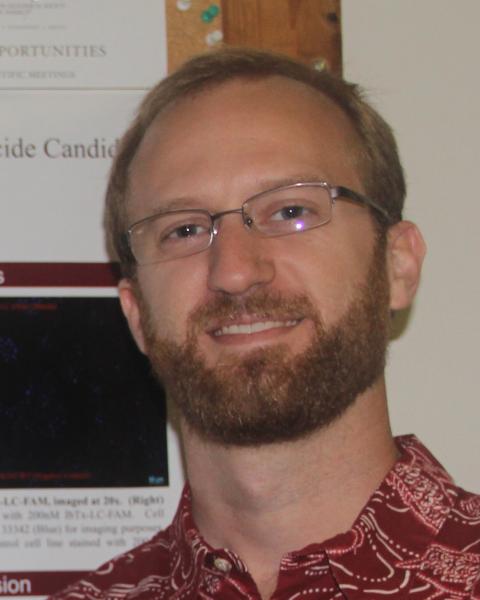 Zachary Bergeron
Zachary Bergeron
2013 Scholar of the Year, Potential Societal Benefit
Helen Jones Farrar Award in Tropical Agriculture
College of Tropical Agriculture and Human Resources, University of Hawai‘i at Manoa
BS in biomolecular science, MS in chemistry, Clarkson UniversityZachary is working on a new tool that uses biofluorescence as a sort of “molecular lightbulb” to measure the activity of compounds derived from the toxin of endemic Hawaiian cone snails. He hopes to create a fluorescent-ligand based assay to identify compounds that can be bioengineered to create biodegradable molluscicides to protecting Hawai‘i food crops and the people who eat them from the rat lungworm parasite. He coauthored a historical overview of peptide bioengineering published in the journal Toxins.
 Jonathan Whitney
Jonathan Whitney
2013 Scholar of the Year, Scientific Merit
Maybelle Roth Award in Conservation Biology
Department of Biology, College of Natural Sciences, University of Hawai‘i at Manoa
BA in zoology, Prescott CollegeJonathan studies a common Hawai‘i reef dweller, the arc eye hawkfish, to explain how speciation occurs on the reef. His research, which combines ecology, behavior and genetics, suggests that natural selection is driving divergence in two permanent color polymorphs whose ranges overlap. It may be the first time gene changes involved in speciation can be identified while divergence occurs. He received a National Science Foundation Graduate Research Fellowship in Ecological Genomics and has published in several journals.
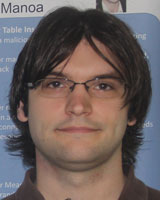 Todd Baumesiter
Todd Baumesiter
Sarah Ann Martin Award in Computer Science
Department of Information and Computer Sciences, College of Natural Sciences, University of Hawai‘i at Manoa
BS in computer science, master of software engineering, University of Wisconsin at La CrosseTodd's research balances measures to ensure anonymity against the resulting reduction in performance in crowd based peer-to-peer network software. He discovers attacks that can be mounted to exploit the programming designed to improve performance, and then creates counter-measures to strengthen the security of the systems. He has helped identify two attacks that, used together, identified 24–43 percent of users. Countermeasures that he helped develop have been implemented in Freenet. Not surprisingly, Todd enjoys cyber security war games.
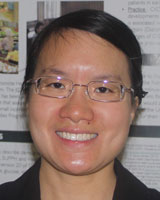 Julaine M. Ching
Julaine M. Ching
ARCS Honolulu Endowment Award in Nursing
Department of Nursing, School of Nursing and Dental Hygiene, University of Hawai‘i at Manoa
BS in nursing, BA in ethnic studies, MS in nursing, University of Hawai‘i at ManoaJulaine uses three assessment tools to learn about quality of life, care and belief systems of Asian Americans, Pacific Islanders and Native Hawaiians in stage 3 kidney disease, who have suffered some kidney damage but still have the opportunity to make lifestyle changes that could prevent advancing to stages 4 or 5. She will develop a culturally appropriate self-management intervention study with an eye to improving screening, surveillance and prevention measures that maintain and improve quality of life. She a volunteer researcher with the National Kidney Foundation of Hawai‘i and coauthor of a Kidney Research Clinical Practice paper that evaluates Hawai‘i’s grassroots community-based approach for early detection and screening.
 Emily First
Emily First
ARCS Award in Volcanology
Department of Geology and Geophysics, School of Ocean and Earth Science and Technology, University of Hawai‘i at Manoa
BS in geology, BA in French, University of GeorgiaEmily studies samples from the basaltic meteorite Yamato 980459, found in Antarctica in 1998. She analyzes the two main minerals in the asteroid, olivine and pyroxene, examining the branching dendrite crystals. She also makes her own synthetic analog, mixing chemical powders in the same proportion as basalts and baking it at six times the temperature of a pizza oven. By controlling the temperature and cooling rate and comparing the resulting composition and morphology with natural rocks, she expands knowledge about the cooling of basaltic lava flows. Ultimately, improved understanding will aid in the development of hazard assessments for active volcanoes. Basalts on Mars aremore like those on Kilauea than either are with basalts from Mount St. Helens. Emily received a Fred M. Graduate Fellowship.
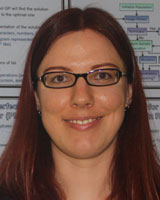 Jennifer Rayno
Jennifer Rayno
Bretzlaff Foundation Award in Engineering
Department of Electrical Engineering, College of Engineering, University of Hawai‘i at Manoa
BS in electrical engineering, University of Utah; MS in electrical engineering, San Diego State UniversityJennifer Rayno uses genetic programming technology to design new metamaterials in an effort to create a lighter, more compact and more efficient antenna for ultra-wideband communication systems. With promising early results, she is moving into fabrication of 3D structures. She conducts her research in the College of Engineering’s Hawai‘i Center for Advanced Communications. She is first author on three journal articles published by the Institute for Electrical and Electronics Engineers and a member of Tau Beta Pi and Phi Kappa Phi Honor Societies.
 Raphael Ritson-Williams
Raphael Ritson-Williams
Maybelle Roth Award in Conservation Biololgy
Department of Zoology, College of Natural Sciences, University of Hawai‘i at Manoa
BS in biology, The Evergreen State University; MS in biology, University of GuamRaphael is using genetic sequencing to identify the genes that turn on to trigger production of proteins in response to stresses in corals. He wants to know if coral can adapt to stresses such as sedimentation, nutrient runoff and climate change. Comparing stress response from multiple coral populations in the field will gauge the genetic resources available for adaptation. Raphael has more than 25 publications to his credit
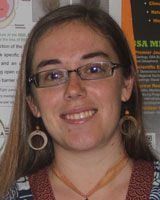 Kelsey O. Roe
Kelsey O. Roe
Koenig Foundation Award in Medicine
Department of Tropical Medicine, Medical Microbiology and Pharmacology, John A. Burns School of Medicine, University of Hawai‘i at Manoa
BS in biochemistry, Western Washington UniversityKelsey examines how the West Nile virus passes from the blood into the brain, where it affects neurons. Using a mouse model, she examines changes in the blood-brain barrier exposed to the virus. Understanding the mechanism is important in developing products that destroy the virus without also killing the neurons. She is also testing a novel antiviral drug that shows promising results. She presented her data at the 2011 meeting of the American Society of Virology and is first author of an article published in the Journal of General Virology.
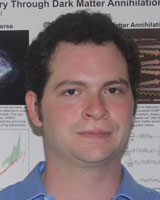 Patrick Stengel
Patrick Stengel
Sarah Ann Martin Award in Physics
Department of Physics and Astronomy, College of Natural Sciences, University of Hawai‘i at Manoa
BS in mathematics/physics, University of DelawarePatrick studies the weakly interacting massive particles, or WIMPs, commonly used in model frameworks to account for the observed dark matter density. Baryogenesis, or the generation of the matter asymmetry, has recently been proposed to be possible within such a WIMPy scenario. The model Stengle works on generalizes the WIMPy baryogenesis framework in the context of an effective field theory. A new region of viable model parameters predicts signatures of the WIMPy baryogenesis mechanism at particle colliders, as well as at neutrino and cosmic ray detection experiments. He has also worked on computer code to simulate the propagation and detection of electromagnetic pulses produced by energetic cosmic ray particles interacting in Antarctic ice.
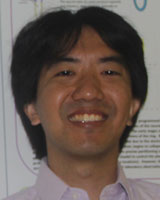 Aaron Tamura-Sato
Aaron Tamura-Sato
Sarah Ann Martin Award in Mathematics
Department of Mathematics, College of Natural Sciences, University of Hawai‘i at Manoa
BS in mathematics, Harvey Mudd CollegeExtra-cellular structures called fractones are believed to control activation of the growth factors that guide the proliferation and differentiation of cells in specific locations within the developing embryonic brain. Aaron works on a mathematical control model that describes the process, called morphogenesis. Some of his time is spent in a biology lab, counting fractone numbers and identifying areas where they congregate in the brain. He hopes better understanding of how brains develop will lead to better treatment and prevention of developmental disorders. He is a published author was named an outstanding mathematics teaching assistant.
 Jeremy B. Young
Jeremy B. Young
Shelagh Kresser Award in Engineering
Department of Electrical Engineering, College of Engineering, University of Hawai‘i at Manoa
BS in biomedical engineering, Illinois Institute of TechnologyJeremy works on improved acoustic monitoring systems as a more efficient, cost-effective way to study marine mammals. Passive acoustic monitoring can record vocalizations, such as the songs of whales and clicks of dolphins, providing researchers with information on population counts and animal behavior. Young applies a technique called blind source separation to isolate information with very few assumptions and uses algorithms to analyze the data. He hopes to create a system that can use one microphone instead of an array and continue refining the algorithms.
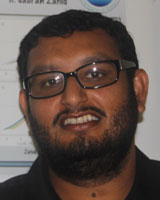 H. Jabran Zahid
H. Jabran Zahid
Columbia Communications Award in Astronomy
Institute for Astronomy, University of Hawai‘i at Manoa
BS in physics and astronomy, University of California, Berkeley; MS in astronomy, University of Hawai‘i at ManoaJabran looks back to about a billion years after the big bang, when the prevalent gasses began to form filaments and collapse under the force of gravity to form the first stars, which processed helium and hydrogen and seeded the universe with the atoms that make planets and life forms possible. Conducting a census of oxygen as a measurement of this enrichment, Jabran discovered that the amount decreases over time. He has been awarded time on the Subaru and UH88 telescopes on Mauna Kea and Siding Spring Observatory in Australia and recently completed a Smithsonian Astrophysical Observatory Predoctoral Fellowship.
